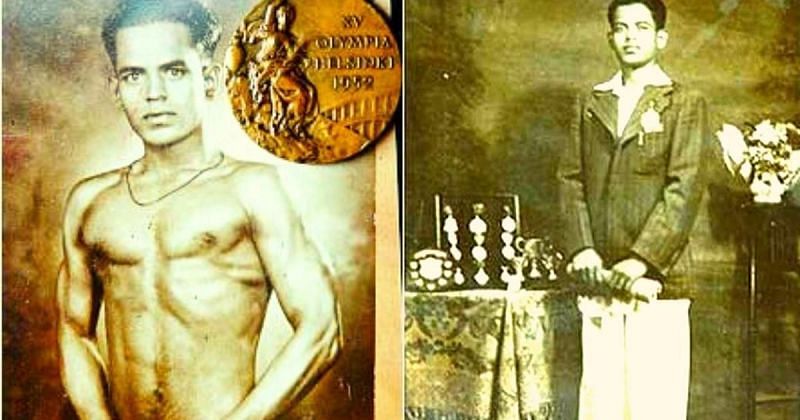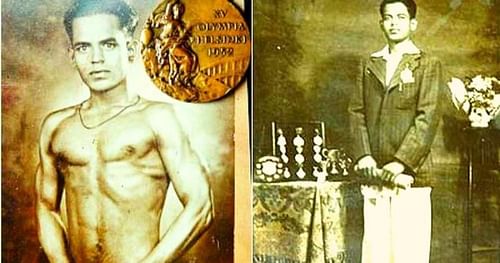
29 days to Tokyo Olympics - The confusion that led to KD Jadhav missing out on an Olympic gold
When KD Jadhav returned home with an Olympic medal around his neck, he was greeted with a cavalcade of 151 bullock carts and dhols (drums). And rightly so. Known as the "Pocket Dynamo" due to his short stature and nimble feet, Jadhav was the first athlete of Independent India to win a medal at the Games. He won a bronze medal at the 1952 Helsinki Olympics.

Struggles aplenty for KD Jadhav in Road to 1952 Helsinki Olympics
KD Jadhav, one of the five sons of wrestler Dadasaheb Jadhav, grew up in Goleshwar village, about 75km north of Kohlapur. The 5ft 6inch wrestler took to the sport at a young age and grew into a formidable fighter by the time he was a teenager. In 1948, he beat then national flyweight champion Niranjan Das (Bengal) to earn his quota for the 1948 London Games. His trip was financed by the Maharaja of Kohlapur.
During KD Jadhav's stay in London, he was trained by the US’ lightweight world champion Rees Gardener. The training proved worthy as Jadhav, who was competing for the first time on a wrestling mat, finished sixth. His highlight of the tournament was beating Australia’s Bert Harris.
By the time the 1952 Helsinki Games arrived, KD Jadhav was a well known name in Indian wrestling. However, up next for him was a challenge of a new nature. Despite being a favorite to win India a medal, he lacked the financial support to make the trip to Finland.
KD Jadhav and his family opted for crowd funding. The principal of Rajaram college helped him collect Rs 7,000. However, he was still Rs 12,000 short. He even sought help from then Bombay Province Chief Minister Morarji Desai. Ironically, Desai was the first to garland Jadhav when he returned with his bronze medal from Helsinki.
It was his coach, Govind Purandare, who took a loan of Rs 3,000 from Maratha Co-Operative bank to finance Jadhav. He had moved up to the bantamweight category and had become nimble on the mat.
KD Jadhav and the confusion that led to him settling for bronze medal
KD Jadhav moved up to the bantamweight category from the flyweight division. Besides this change, there were changes in rules too, like a wrestler had to "pin" the opponent for two-seconds to win the bout.
ALSO READ: 5 wrestlers who might stop Vinesh Phogat from winning gold at the Tokyo Olympics
Moreover, he had to familiarize himself with the mat, in place of the mud where he trained for the Olympics. KD Jadhav started his campaign strongly. He breezed through the first three bouts and received a bye in the fourth round.
He had won each of his first five bouts in under five minutes. According to the book, ‘Olympic Veer Khashaba Jadhav’ by Professor Sanjay Dudhane, the wrestler then went to his manager to ask the schedule for his next bouts. KD Jadhav was informed that he had a rest day. However, Jadhav went to watch the other matches. And just like most athletes of the day, he carried his wrestling kit along.
ALSO READ: Ravi Dahiya, Deepak Punia’s Tokyo Olympics preparation hit roadblock due to visa and COVID-19 vaccine
Suddenly, while enjoying the bouts, he heard his name being announced. And by the time he reached the official table, his name was called again. The confusion led to his loss against Shohachi Ishii after a 15 minute bout.
As per the rules, a rest of 30 minutes was required between the two bouts. But to the Indian wrestler’s surprise, he was called again for the match against Soviet Union’s Rashid Mammadbeyov. A tired KD Jadhav failed to recover from the marathon bout against Ishii, who eventually won gold in Helsinki. Jadhav had to settle for a bronze medal.
ALSO READ: Vinesh Phogat and coach Woller Akos leaving no stone unturned in preparation for Tokyo Olympics
It took over 50 years for India to get their second wrestling medal. Sushil Kumar broke the drought by winning a bronze medal at the Beijing Games.